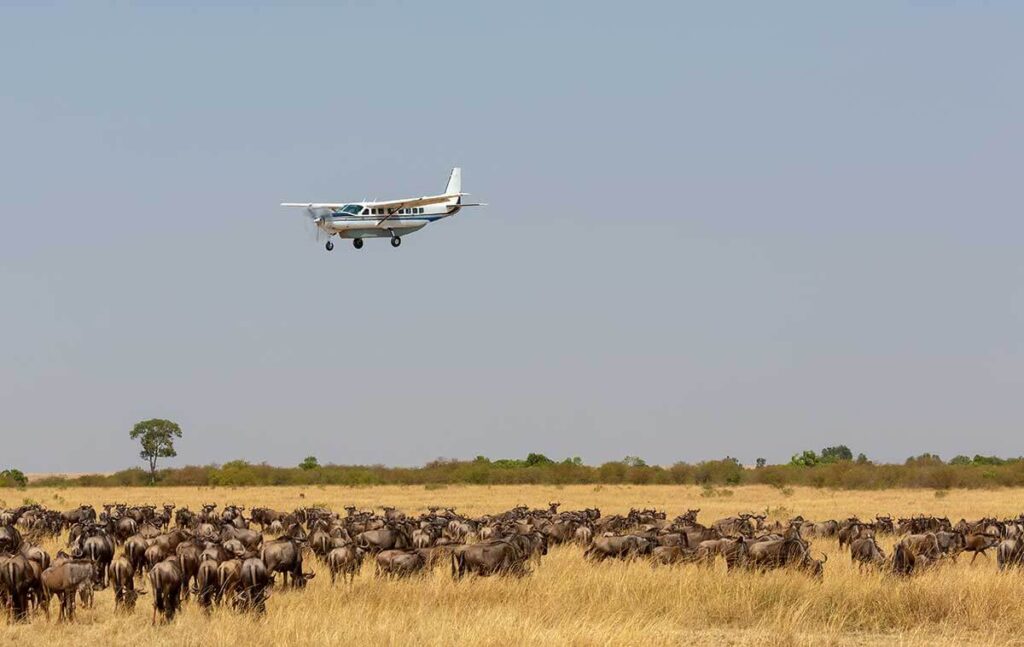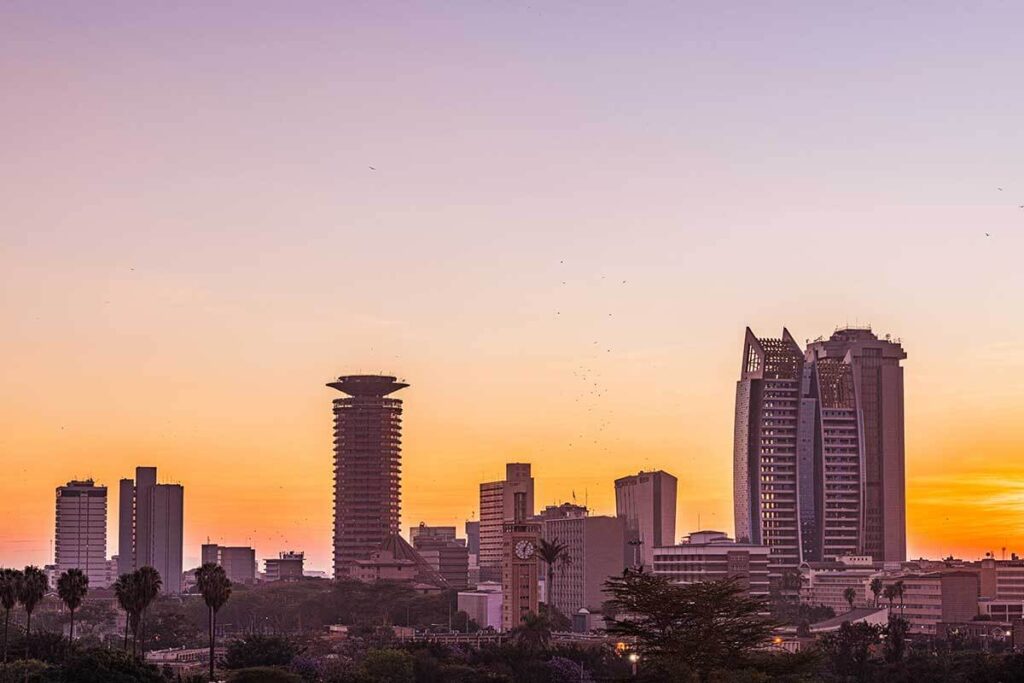Advanced Air Mobility (AAM) has the potential to solve Africa’s unique problems, such as poor infrastructure, slow economic growth, traffic congestion, and inadequate connectivity in underserved areas. However, like other AAM projects worldwide, AAM has yet to take root in Africa due to a lack of funding.
Recently, Kenya held its first Advanced Air Mobility Symposium, organized by Fahari Aviation in Nairobi. Being the first symposium, this event had an impressive turnout of at least 100 attendees.
It brought together stakeholders in the aviation industry from around the world, such as OEMs of eVTOL aircraft (Archer Aviation, Supernal, Electra Aero, etc.), executives in major airlines and drone companies, UAV pilots, and aviation students, among others.
The different stakeholders brought diverse perspectives and insights into how Africa can launch its first project. This article combines the insights from this discussion and suggests actionable steps for AAM adoption in Africa.

About Fahari Aviation
Fahari Aviation is part of Kenya Airways (Kenya’s airline), focusing on commercial drone applications and training in Kenya. They are also one of the few companies advancing the idea of flying taxis in Kenya and East Africa, and this symposium allowed them to gather where Africa is regarding AAM and how they can move forward in launching their first project.
Meet the Panelists
The discussion on Financing AAM in Africa had the following panelists;
- Alastair Curtis – Alastair leads international strategy at Archer Aviation, focusing on scaling AAM operations across emerging markets. Prior to this, he managed operations at Uber in California, Kenya, and Nigeria, giving him first hand insight into launching tech-driven mobility platforms in complex environments.
- Hellen Mwariri – Hellen has been with Kenya Airways since 2009, serving in audit, revenue, and finance roles before becoming Chief Financial Officer and now Chief Strategy & Innovation Officer.
- Hawkins Musili – As head of Fahari Aviation (Kenya Airways’ drone and innovation division), Hawkins offered a local lens on AAM integration. He emphasized AAM’s ability to bridge infrastructure gaps, while cautioning that costs will initially be premium — requiring careful pilot rollouts and shared infrastructure development.
- David Rottblatt – A seasoned aviation leader, David is a licensed commercial pilot across fixed-wing, rotorcraft, and drone platforms. He co-founded Eve Air Mobility, which helped build a record backlog of over 3,000 eVTOL aircraft, and has held roles in sales strategy and manufacturing. He is currently the director of Strategy and Commercialization at Supernal.
- Diana Siegel – Diana has over two decades of leadership in finance, innovation, and aviation strategy. Her work at Electra Aero focuses on developing hybrid-electric short takeoff and landing (STOL) aircraft and building financial frameworks that support global AAM deployment.
Business Case for AAM in Africa – Is it Worth the Investment?
The main reasons that make Africa attractive for AAM innovation included:
Connectivity
Africa is still one of the least connected continents. Some regions still lack access through road, air or rail. Building roads, airports or a railway system takes time and resources. In this case, investing in electric vertical takeoff and landing aircraft (eVTOLs) would help Africa leapfrog the process of building traditional travel methods. eVTOLs don’t need a runway to take off and land, which allows them to take off and land anywhere.
Enhancing Urban Mobility
In major African cities like Nairobi, Lagos and Johannesburg, traffic congestion remains a major issue that delays economic growth, causes frustrations, limits productivity and exacerbates pollution. AAM promises to solve this by providing convenience and efficiency. AAM allows people to escape traffic congestion to get to their desired destination faster while limiting greenhouse gas emissions. In other words, there is a real need for AAM to improve urban mobility in many African countries.
Driving Economic Growth
AAM could lead to economic growth by advancing technological advancements and creating job opportunities in Africa. The panelists advocated for collaboration between original equipment manufacturers (OEMs) and African Institutions to nurture local talent and support long-term industry growth. This same talent would, in turn, provide the skilled workforce needed for AAM to succeed.

Challenges Hindering Financing AAM in Africa
Like any new technology that tries to break into the African market, AAM faces significant challenges that could deter investors and slow its adoption. During the symposium, experts discussed the regulatory, financial and systemic barriers that might hinder AAM in Africa.
Perceived Risk
Africa faces challenges like the lack of an established aviation infrastructure, political instability and harmonized regulations. As a result, investors are hesitant, taking a “First-Mover Standoff” stance in which they seem to be waiting for the first person to make the first move.
Lack of Past Projects and Demonstrated ROI
While AAM has been trialed in other regions, because Africa has a unique landscape, it might not be ideal to use the successes or failures of these projects to gauge how well they would perform in Africa. The panelists also noted that because there have not been any pilot AAM projects in Africa itself that investors could learn from, this makes them even more hesitant to take the leap.
Inconsistent Regulatory Framework
Perhaps one of the most reiterated challenges to advancing AAM in Africa is the lack of harmonized aviation regulations. There are more than 50 countries in Africa, each with its own aviation regulations. It would not be viable for OEMs to have to create different aircraft to meet the regulatory needs of each region in the African market, noted Diana Siegel of Electra Aero.
Lack of Infrastructure and Financial Burden on Operators
Since African countries lack the infrastructure to support AAM operations, such as vertiports, charging stations and UAS Traffic Management (UTM) systems, the operators would be forced to build them, if they desired to use their eVTOL technology. This places a huge burden on them and makes it less viable. The panelists suggested Government-backed guarantees, public-private partnerships or infrastructure-specific surcharges to reduce some of the burdens on the operator.
Lack of a BVLOS Regulatory Framework
The panelists also highlighted the lack of a beyond visual line of sight (BVLOS) regulatory framework in most African countries. This hinders AAM progress since BVLOS is crucial for large-scale AAM operations. As mentioned in a previous article, even in countries with a BVLOS framework, approval is on a case-by-case basis. The lack of a harmonized UTM makes it even more difficult to get approval.

Global AAM Projects & Funding Models: What Africa Can Learn
The event noted successful pilot projects globally, how they raised funding and how Africa could potentially replicate them.
UAE – Abu Dhabi Investment Office (ADIO) and AAM Consortium
The UAE has combined government-backed funding through ADIO with a private-sector partnership to advance AAM, launch commercial eVTOL taxis and develop other AAM infrastructure. ADIO has partnered with companies like Archer Aviation, a leading eVTOL manufacturer, to realize their dream of eVTOL taxis. Other consortium members include key players in the aviation industry, such as airports and the Civil Aviation Authority. African governments can learn from this by providing funding and partnering with stakeholders in the aviation industry to minimize the financial burden. This would potentially increase investor appeal for AAM in Africa.
Japan – Tokyo Metropolitan Government’s Pilot Program
The Tokyo Metropolitan Government’s Pilot AAM Program was another example the panelists cited, showing why governments should provide backing for pilot AAM projects. Like in the UAE, the Tokyo Metropolitan Government formed the Tokyo Meteroplotan Government-Private Council for the Realization of a Revolution in Air Mobility. This department is tasked with conducting feasibility studies for AAM, developing AAM infrastructure and establishing pilot AAM projects. The Public sector provides the funding and the locations, while the private sector uses its assets to start the projects. Japan’s model provides controlled experimentation and data gathering without impacting the operators.
Saudi Arabia – Public Investment Fund and AAM
Saudi Arabia’s Public Investment Fund (PIF) is the country’s initiative to diversify its economy beyond oil by investing in other industries such as logistics and tourism. As such, the PIF has set aside resources to advance AAM in Saudi Arabia by integrating it into the country’s national infrastructure.
Leasing and Investment Models
One of the main reasons African governments may hesitate to invest in AAM is the lack of enough financial resources to purchase the aircraft and establish the necessary infrastructure. On the other hand, investors are hesitant due to the lack of past projects to learn from. To solve this, the panelists suggested a leasing model where users can test AAM for a short period without purchasing the equipment upfront. If all goes well, they can then make the purchase later. This mitigates financial risk and lowers the entry barriers for African operators. Two companies mentioned that would be willing to offer leasing plans for AAM aircraft include LCI and Avolon.
Infrastructure Surcharge Model
One panelist mentioned that they had visited Machu Picchu in Peru a couple of times. And over the years, the infrastructure around Machu Picchu has significantly improved. Why? The government of Peru introduced a tourism-based funding model where part of the ticket money was reinvested into the infrastructure. The panelists suggested a similar model where part of the air ticket money would be used to develop AAM in Africa. This provides a low-cost, sustainable funding source and allows more people to contribute to the growth of AAM.
The Future of AAM in Africa
By leveraging global insights, aligning policy and regulatory frameworks and adopting innovative financing models, Africa can overcome the challenges hindering AAM in Africa. Government and private sector partnerships and funding models such as infrastructure surcharges and leasing models could de-risk pilot projects and allow operators to learn what works and what doesn’t for Africa’s unique landscape.
By: Peter Karanja

